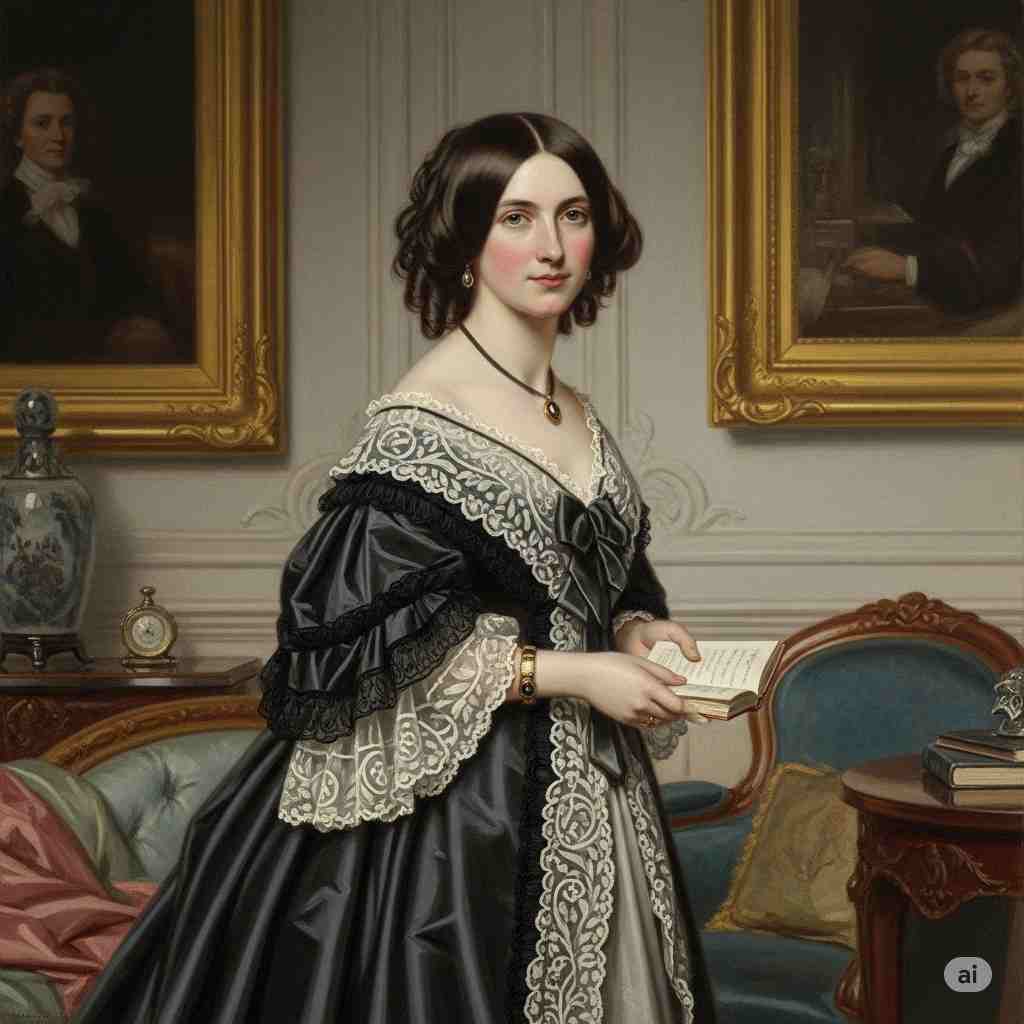How Do I Love Thee?
Elizabeth Barrett Browning
1806 to 1861

How do I love thee? Let me count the ways.
I love thee to the depth and breadth and height
My soul can reach, when feeling out of sight
For the ends of being and ideal grace.
I love thee to the level of every day’s
Most quiet need, by sun and candle-light.
I love thee freely, as men strive for right;
I love thee purely, as they turn from praise.
I love thee with the passion put to use
In my old griefs, and with my childhood’s faith.
I love thee with a love I seemed to lose
With my lost saints. I love thee with the breath,
Smiles, tears, of all my life; and, if God choose,
I shall but love thee better after death.
Elizabeth Barrett Browning's How Do I Love Thee?
Elizabeth Barrett Browning's sonnet "How Do I Love Thee?" (Sonnet 43 from her collection "Sonnets from the Portuguese") is a powerful exploration of the depths and dimensions of love. Through skillful use of imagery, metaphor, and the sonnet form, Browning crafts a profound declaration of love that transcends the physical and temporal boundaries of human existence.
The poem opens with a rhetorical question that serves as both the title and the first line, immediately engaging the reader and establishing the central theme. This question is quickly followed by the speaker's determination to "count the ways" of her love, setting up the structure for the rest of the poem. Each subsequent line or pair of lines presents a different facet or quality of the speaker's love, creating a comprehensive portrait of an all-encompassing emotion.
Browning employs vivid spatial imagery in the second and third lines to convey the immensity of her love. The phrase "depth and breadth and height" creates a three-dimensional space that encompasses all of physical reality. This is further expanded by the metaphysical reach of her soul "when feeling out of sight / For the ends of being and ideal grace." Here, Browning suggests that her love extends beyond the physical world into the realm of the spiritual and the ideal, hinting at a love that is both earthly and divine.
The poem then shifts to more quotidian imagery, describing a love that exists "to the level of every day's / Most quiet need, by sun and candle-light." This juxtaposition of the grandiose with the everyday demonstrates the all-encompassing nature of the speaker's love, which permeates both the extraordinary and the mundane aspects of life. The mention of "sun and candle-light" also introduces a temporal element, suggesting that this love endures throughout the day and night, and by extension, through all time.
Browning continues to layer her description of love with a series of comparisons. She loves "freely, as men strive for right," and "purely, as they turn from praise." These lines not only characterize her love as voluntary and untainted but also align it with noble human pursuits like justice and humility. The use of semicolons in these lines creates a rhythmic pause, allowing each quality of love to resonate with the reader.
The volta, or turn, in the poem occurs in the ninth line with the introduction of "passion." This passion is linked to "old griefs," suggesting a love tempered and deepened by experience and suffering. The speaker's love is also associated with "childhood's faith," creating a contrast between the innocence of youth and the wisdom of maturity. This duality is further emphasized in the following lines, where the speaker claims to love "with a love I seemed to lose / With my lost saints." Here, Browning hints at a complex personal history, perhaps alluding to a crisis of faith or the loss of idealized figures from her past.
The final tercet of the sonnet reaches its emotional climax. The speaker declares that she loves with "the breath, / Smiles, tears, of all my life," encompassing the full range of human experience and emotion. The poem concludes with a powerful statement of eternal love: "and, if God choose, / I shall but love thee better after death." This line not only reaffirms the spiritual dimension of the speaker's love but also suggests that it will continue to grow and deepen even beyond the boundaries of mortal life.
Structurally, the poem adheres to the Petrarchan sonnet form, with an octave followed by a sestet. However, Browning's use of enjambment and varied caesuras creates a fluid, almost conversational rhythm that belies the strict formality of the sonnet. This technique allows her to express complex ideas and emotions within the constraints of the form while maintaining a sense of natural, heartfelt declaration.
The repetition of "I love thee" at the beginning of several lines creates a litany-like effect, reinforcing the poem's central theme and giving it an almost incantatory quality. This repetition also serves to structure the poem, with each iteration introducing a new aspect or quality of the speaker's love.
In conclusion, "How Do I Love Thee?" is a masterful exploration of the multifaceted nature of love. Through her skillful use of imagery, metaphor, and form, Elizabeth Barrett Browning creates a poem that is at once deeply personal and universally resonant. The speaker's love is presented as all-encompassing, transcending physical and temporal boundaries, and encompassing both the sublime and the everyday. By interweaving elements of the spiritual, the emotional, and the physical, Browning crafts a portrait of love that is as complex and nuanced as the human experience itself.
This text was generated by AI and is for reference only. Learn more
Want to join the discussion? Reopen or create a unique username to comment. No personal details required!



Comments
No comments yet. Be the first to comment!